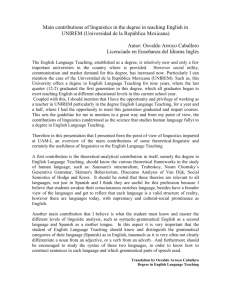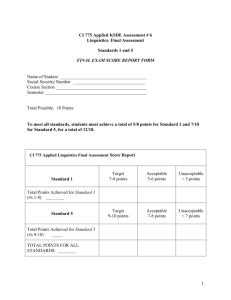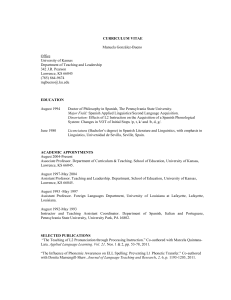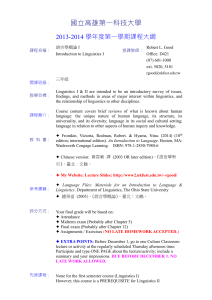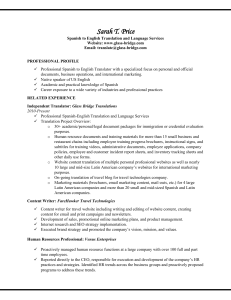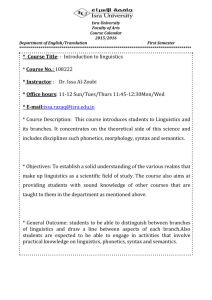Addendum
advertisement
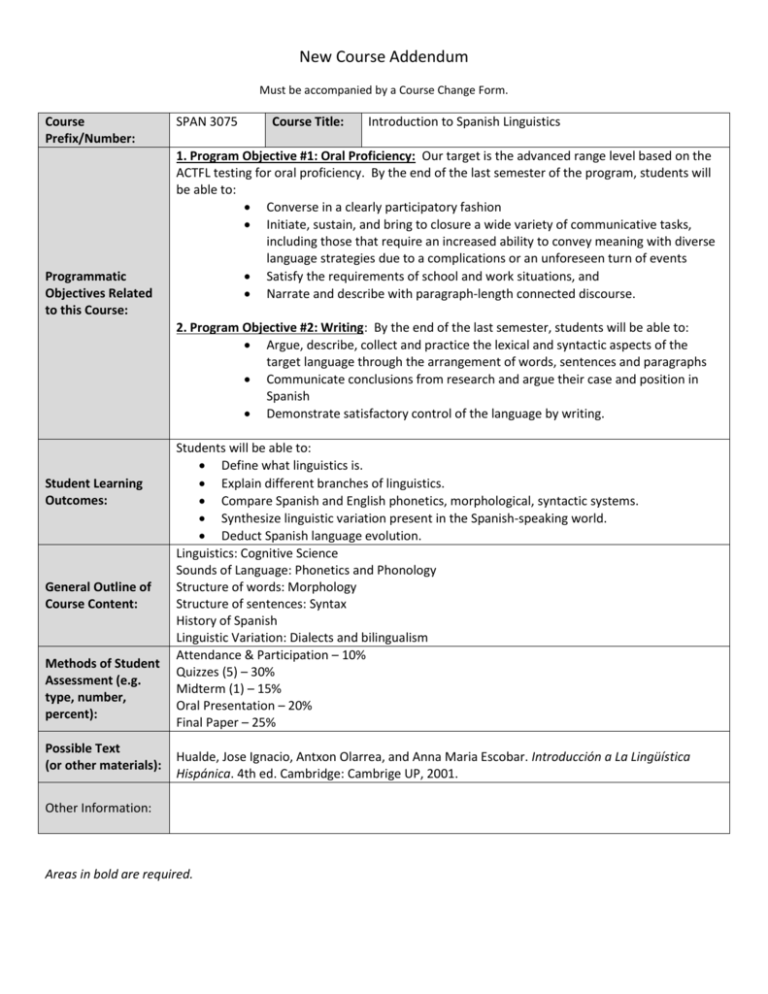
New Course Addendum Must be accompanied by a Course Change Form. Course Prefix/Number: Programmatic Objectives Related to this Course: SPAN 3075 Course Title: Introduction to Spanish Linguistics 1. Program Objective #1: Oral Proficiency: Our target is the advanced range level based on the ACTFL testing for oral proficiency. By the end of the last semester of the program, students will be able to: Converse in a clearly participatory fashion Initiate, sustain, and bring to closure a wide variety of communicative tasks, including those that require an increased ability to convey meaning with diverse language strategies due to a complications or an unforeseen turn of events Satisfy the requirements of school and work situations, and Narrate and describe with paragraph-length connected discourse. 2. Program Objective #2: Writing: By the end of the last semester, students will be able to: Argue, describe, collect and practice the lexical and syntactic aspects of the target language through the arrangement of words, sentences and paragraphs Communicate conclusions from research and argue their case and position in Spanish Demonstrate satisfactory control of the language by writing. Student Learning Outcomes: General Outline of Course Content: Methods of Student Assessment (e.g. type, number, percent): Possible Text (or other materials): Students will be able to: Define what linguistics is. Explain different branches of linguistics. Compare Spanish and English phonetics, morphological, syntactic systems. Synthesize linguistic variation present in the Spanish-speaking world. Deduct Spanish language evolution. Linguistics: Cognitive Science Sounds of Language: Phonetics and Phonology Structure of words: Morphology Structure of sentences: Syntax History of Spanish Linguistic Variation: Dialects and bilingualism Attendance & Participation – 10% Quizzes (5) – 30% Midterm (1) – 15% Oral Presentation – 20% Final Paper – 25% Hualde, Jose Ignacio, Antxon Olarrea, and Anna Maria Escobar. Introducción a La Lingüística Hispánica. 4th ed. Cambridge: Cambrige UP, 2001. Other Information: Areas in bold are required.

